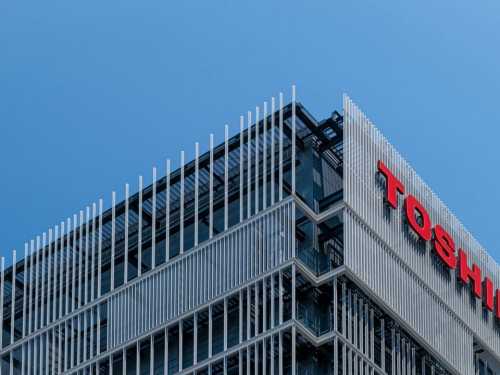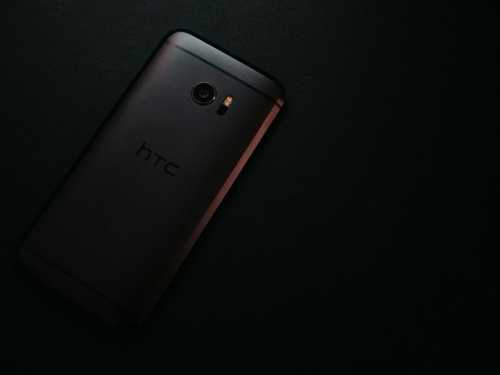
Their products were known all over the world, from the first mass-produced laptop to nuclear power plants. For decades, the Toshiba brand was synonymous with Japanese quality and innovation. But today, this legendary company has left the public market and is experiencing a deep crisis after a series of high-profile scandals.
But what happened? Let's figure it out.
How Toshiba was founded
Tanaka Hisashige
In the mid-19th century, Japan was an isolated feudal country without modern industry. That all changed in 1868 with the beginning of the Meiji Restoration, a series of reforms that opened the country to the world and launched its rapid modernization.
One of those who helped Japan achieve this technological breakthrough was Tanaka Hisashige, an inventor who would later be called the “Edison of Asia.” At the age of 20, he became famous for creating complex mechanical dolls for the imperial court. In the 1830s, he invented a pocket candlestick and an oil lamp with a fuel pump, and in 1851 he created the “Clock of Myriad Years” – a unique mechanism with seven indicators that worked for a year from a single factory.
The turning point for Hisashige came in 1853, when he saw a demonstration of a steam engine from Vice Admiral Putyatin's ship in the port of Nagasaki. With the help of a Dutch technical manual, the Japanese inventor created the first domestic steam engine.
On July 11, 1875, Tanaka, having received an important government order, founded Tanaka Engineering Works, Japan's first telegraph equipment factory. The company became a real smithy of personnel for Japanese industry. Many of its employees later founded their own companies, which became industrial giants: Oki Electric Industry, Anritsu, and others.
After the founder's death in 1881, the company began producing torpedoes and mines for the Imperial Navy. However, as the Navy switched to competitive procurement and in-house production, demand declined. In 1893, Mitsui Bank took control of the company, which was on the verge of bankruptcy, and renamed it Shibaura Engineering Works.
Itisuke Fujioka
Toshiba's second founding father, Itisuke Fujioka, appeared on the scene in 1878. While still a student at the Imperial College of Engineering, under the guidance of British professor William Ayrton, he became one of the pioneers of electric lighting in Japan, notably demonstrating the operation of the arc lamp. This was an extremely important development for a country that was completely dependent on imported lighting equipment.
In 1890, Fujioka founded the Hakunetsu-sha company to produce bamboo filament lamps. The first years were difficult: after the opening of the borders, the country was flooded with Western goods. Japanese lamps cost 60% more than imported ones and were inferior in quality. The company survived mainly thanks to military orders during the wars with China (1894-1895) and Russia (1904-1905).
Salvation came in 1905 when the American General Electric bought 51% of the company's shares, which was renamed Tokyo Electric. GE sent its vice president, provided technology and equipment for lamp production. Tokyo Electric began selling products under the GE brand.
By 1939, both companies had become leaders in their respective industries and owned shares in each other, forming the Mitsui conglomerate. Shibaura dominated the production of heavy electrical equipment, creating Japan's first hydroelectric generator, the first induction motors, and electric fans. Tokyo Electric led the way in the production of household appliances, introducing the revolutionary double-barreled light bulb in 1921.
In 1931, when the war with China began, the government banned the production of household appliances to save metal for military needs. Both companies switched to military lines, supplying the army with radios, generators and other equipment. They began to produce the first fluorescent lamps in Japan's history, radars and gas turbines for generating electricity.
Creation of Toshiba and first steps
In 1939, Shibaura Engineering Works, a leader in heavy electrical equipment, merged with Tokyo Electric, a leader in home appliances, to form Tokyo Shibaura Electric. The nickname Toshiba, formed from the first syllables of the name, quickly became popular, but it would not become the company's official name until 1978.
The post-war years were a time of rapid growth. In 1949, the company went public on the Tokyo Stock Exchange, symbolizing the revival of the Japanese economy. True, the government, fearing monopolization, forced Toshiba to sell 14 companies in the group. But this did not stop its expansion.
Toshiba became a true powerhouse of innovation. It was a pioneer in many fields: the company produced Japan's first automatic electric rice cookers, transistor televisions and microwave ovens, and also developed advanced satellite equipment. And the release of the world's first mass-produced laptop in 1985 opened a whole new era in the computer industry.
Even the international scandal of 1987, when a subsidiary was caught illegally supplying machine tools to the USSR for the production of low-noise submarines, did not stop growth. Although the scandal led to limited sanctions from the United States, they did not stop the company's growth. Toshiba continued to strengthen its position, particularly in Asian markets, and in the following years its profits increased significantly.
In the 1990s, the company made several technological breakthroughs. It developed NAND memory technology, jointly with other technology giants within the framework of the DVD Forum consortium developed the DVD standard, released the revolutionary Libretto subnotebook. Even a large fine of $ 1.1 billion for defective disk drives and the subsequent reorganization with the dismissal of 6,500 employees did not stop innovation – in 1999 the world's quietest MRI machine appeared.
Toshiba grew, conquering new markets: from sound recording to chemical production, from electric lamps to computers. It seemed that there were no limits to its development. Until the early 2000s, Toshiba remained one of the leaders of the global electronics industry. From 2008 to 2014, its annual revenue consistently exceeded 60 billion dollars. It seemed that nothing could prevent the company from further growth.
Fatal decisions and their consequences
However, in 2006, Toshiba made a decision that would later prove fatal. For $5.4 billion, the company bought a controlling stake in the American Westinghouse Electric Company, a leading manufacturer of nuclear reactors. The purchase seemed promising – the rapid growth of nuclear energy in China, the United States and the United Kingdom was expected.
In the following years, the company continued to expand:
— In 2009, it acquired Fujitsu's hard drive division.
— In 2011, it bought the Swiss Landis+Gyr for $2.3 billion.
— In 2012, it acquired IBM's POS terminal manufacturing business for 850 million, becoming the world's largest supplier of retail terminals.
— In 2014, it acquired OCZ Storage Solutions (a manufacturer of RAM and flash memory, also producing nerve impulse sensors, power supplies, and computer components) for 35 million.
But in 2015, a scandal erupted that shook corporate Japan. It emerged that Toshiba management had systematically falsified financial statements for seven years, inflating profits by $1.59 billion. The fraud involved systematically inflating profits and concealing losses in many of the company's divisions, including its nuclear, semiconductor and computer businesses.
As a result, the company's CEO Hisao Tanaka resigned, along with eight other top managers, including his two predecessors. Toshiba's market value fell by $8 billion.
The situation became critical in late 2016. Westinghouse Electric announced multi-billion dollar losses on the construction of nuclear power plants in Georgia and South Carolina. After the Fukushima accident and the fall in oil prices, interest in nuclear energy plummeted, and construction costs spiraled out of control.
In March 2017, Westinghouse filed for bankruptcy, the largest in nuclear power history. Toshiba was found to be more than $6 billion in debt. The situation was so serious that the company was threatened with delisting from the Tokyo Stock Exchange.
An emergency sale of assets has begun:
— The profitable memory chip manufacturing unit was sold to a consortium led by Bain Capital for $18 billion.
— The television business was bought by the Chinese Hisense for 113.6 million. Looking ahead, I will say that today Toshiba-branded TVs are manufactured under license by other companies. The global rights to the brand mostly belong to the Chinese Hisense, however, for example, in Europe they are manufactured by the Turkish company Vestel. Thus, modern Toshiba TVs have only an indirect connection with the heritage of the original Japanese brand.
— The computer division was acquired by Sharp for 36 million and was later renamed Dynabook, thus ending the era of Toshiba-branded laptops.
— Westinghouse itself was sold to Brookfield Business Partners for $4.6 billion.
This helped temporarily, but in 2021 a new scandal erupted. An investigation initiated by the company's largest shareholder, Singapore-based Effissimo Capital Management, revealed that Toshiba management colluded with Japan's Ministry of Trade to block offers from foreign investors. After the investigation was published, the chairman of the board of directors resigned.
That same year, private equity firm CVC Capital Partners offered to buy Toshiba for about $20 billion, but the company declined. In an attempt to find another way out, the company proposed splitting the business into two, but shareholders blocked the plan.
The deal came to a head in 2023, when a group of 20 Japanese companies led by Japan Industrial Partners offered to buy Toshiba for $15.3 billion. By September, the consortium had gained control of 78.65% of the company's shares.
Toshiba's 74-year history as a public company ended in December 2023, when its shares ceased trading on the Tokyo Stock Exchange. The former industrial giant began a new life as a private company.
In May 2024, the new owners announced a radical restructuring. 4,000 employees, mostly in non-production departments over 50, will be laid off. The headquarters will move from central Tokyo to Kawasaki. Toshiba plans to focus on promising areas: power semiconductors for electric vehicles, artificial intelligence, renewable energy and quantum technologies.
Thus began a new chapter in the history of the company, which was once a symbol of Japan's technological power.






